20 Unique and Interesting Bearded Dragon Facts
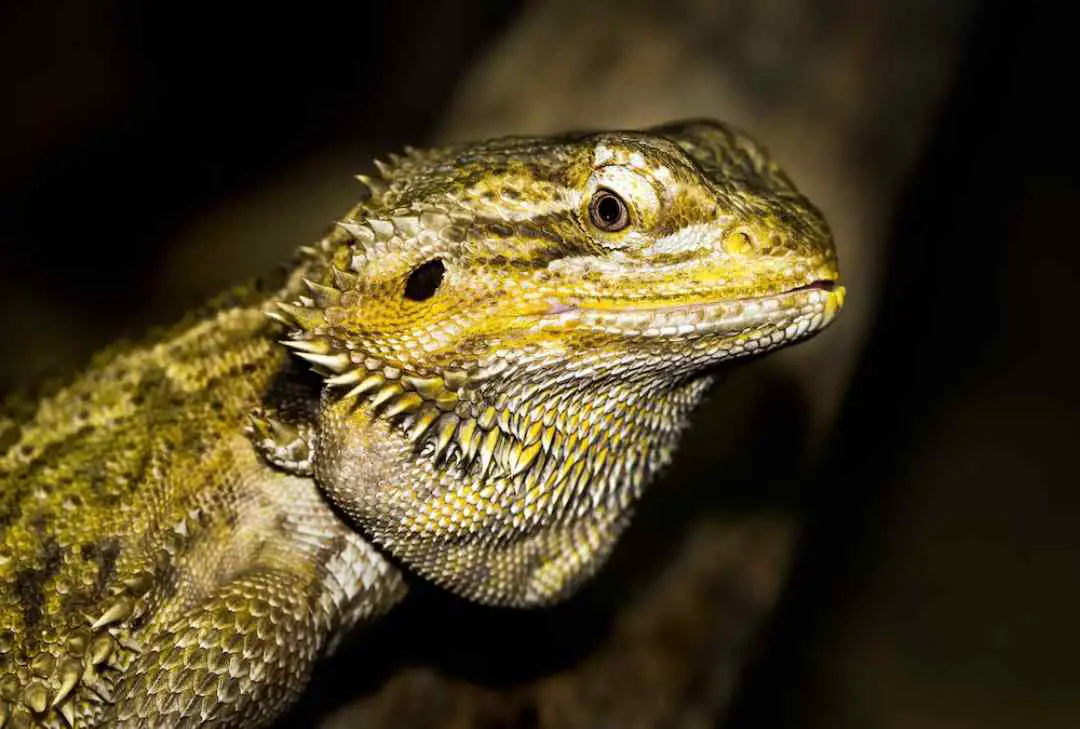
Are you ready to dive into the fascinating world of bearded dragons? And bearded dragon facts…
These incredible reptiles make for unique and captivating companions, and today, we’re going to uncover some awesome facts that will leave you in awe.
So, buckle up and get ready to discover the wonders of the bearded dragon kingdom!
Bearded Dragon Facts
Here are some unique bearded dragon facts you should know:
1. Bearded dragons are native to Australia
Bearded dragons are indeed native to Australia, specifically the arid regions of the continent.
These reptiles have adapted to the harsh desert environment and are well-suited to the hot and dry conditions found in Australia.
Their natural habitat consists of rocky areas, woodlands, and scrublands.
Bearded dragons are known for their ability to blend in with their surroundings, thanks to their coloration and textured skin.
2. Bearded dragons are omnivores
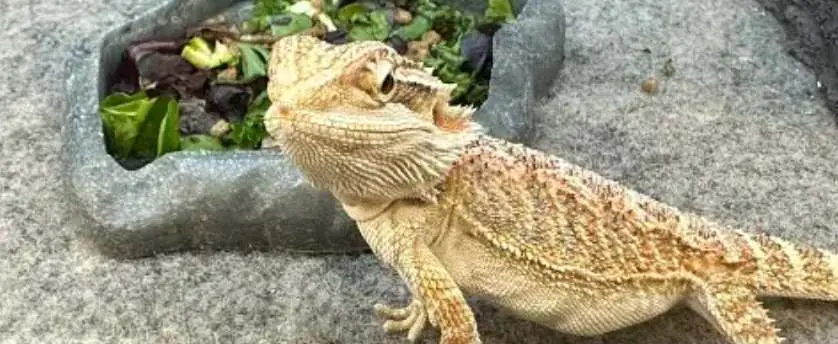
As omnivores, bearded dragons have a diverse diet.
In the wild, they consume a variety of foods, including insects, small rodents, leafy greens, fruits, and flowers.
In captivity, their diet can be supplemented with commercially available reptile food, such as pellets or canned insects.
It’s important to provide a balanced diet for bearded dragons to ensure they receive the necessary nutrients for their growth and overall health.
3. Bearded dragons have amazing vision and hearing
Bearded dragons possess remarkable vision and hearing abilities.
Their eyes are uniquely designed, allowing them to see a wide range of colors and detect movement with precision.
They have the ability to focus on both near and distant objects, thanks to their binocular vision.
Additionally, their eyes can move independently, enabling them to keep a watchful eye on their surroundings while remaining still.
In terms of hearing, bearded dragons have well-developed eardrums and can detect a wide range of sounds.
They are particularly sensitive to low-frequency vibrations, which helps them detect potential threats or prey.
This acute hearing allows them to respond quickly to their environment and stay alert.
4. Bearded dragons are very sociable creatures
Bearded dragons are known for their sociable nature and can form strong bonds with their human companions.
They are generally docile and enjoy being handled and interacted with.
Regular handling and socialization can help build trust and strengthen the bond between a bearded dragon and its owner.
These reptiles also exhibit social behaviors among themselves.
They can be housed together in groups, although it’s important to ensure adequate space and resources for each individual.
Bearded dragons may engage in various social interactions, such as head bobbing, arm waving, and even gentle nudging.
These behaviors are part of their communication and social hierarchy.
5. Bearded dragons are cold-blooded
Bearded dragons, like other reptiles, are ectothermic animals. This means that their body temperature is determined by the temperature of their surroundings.
Unlike mammals and birds that can generate their own body heat, bearded dragons rely on external sources of heat to warm up their bodies.
They do this by basking in the sun, absorbing the warmth through their skin. When they need to cool down, they seek out cooler areas or shade.
This ability to regulate their body temperature through behavioral adaptations is what makes them cold-blooded.
6. Bearded dragons can swim
While they may not be the first animals that come to mind when you think of swimmers, bearded dragons are surprisingly capable of swimming.
They have a streamlined body shape and are equipped with strong limbs and a long, muscular tail, which they use as a rudder.
When they find themselves in water, either intentionally or by accident, they can paddle their limbs and use their tail to propel themselves forward.
However, it’s important to note that bearded dragons are not natural swimmers and are not built for long periods in the water.
They should always have access to a way to exit the water easily to ensure their safety.
7. Bearded dragons can climb trees
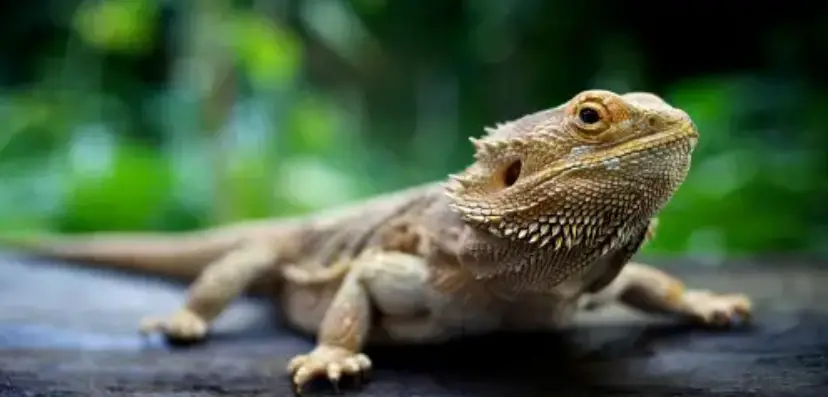
Despite their stocky appearance, bearded dragons possess some impressive climbing abilities.
Their limbs are adapted for gripping and their toes have sharp claws, allowing them to cling onto various surfaces, including trees.
While they may not be as agile as some other arboreal creatures, bearded dragons can still navigate their way up branches using a combination of limb strength and claw grip.
Tree-climbing not only allows them to explore their surroundings but also provides them with opportunities to catch insects or bask in the sun on higher vantage points.
8. Bearded dragons can sleep while standing
Bearded dragons have the remarkable ability to sleep while standing.
Unlike mammals that typically seek out a cozy spot to curl up and rest, bearded dragons can rest on their legs with their heads lifted, even while they are asleep.
This sleeping posture allows them to stay vigilant and easily detect any potential threats or predators.
It’s a defensive mechanism that ensures their safety while still allowing them to get some much-needed rest.
This ability to sleep while standing is aided by their strong limbs and their ability to lock their legs in position, keeping them stable even during sleep.
9. Bearded dragons can run up to nine miles per hour
Bearded dragons are known for their surprising speed.
Although they may not seem like the fastest creatures, they can run at speeds of up to nine miles per hour.
This impressive ability comes in handy for various reasons. In the wild, bearded dragons use their speed to evade predators or catch their prey.
In a domestic setting, it can be quite entertaining to watch them dart across their enclosures or even race around your backyard during supervised outside time.
10. Bearded dragons are not evil
Contrary to their name, bearded dragons are not evil.
They belong to a family of lizards called Agamidae, and while some species within this family may possess venom, bearded dragons do not.
Their name “bearded dragon” comes from their ability to puff out their throat, creating a beard-like appearance.
This behavior is used for communication and display rather than as a defense mechanism.
So, you can rest assured that these reptiles are safe to handle and interact with.
11. Bearded dragons communicate through a variety of gestures
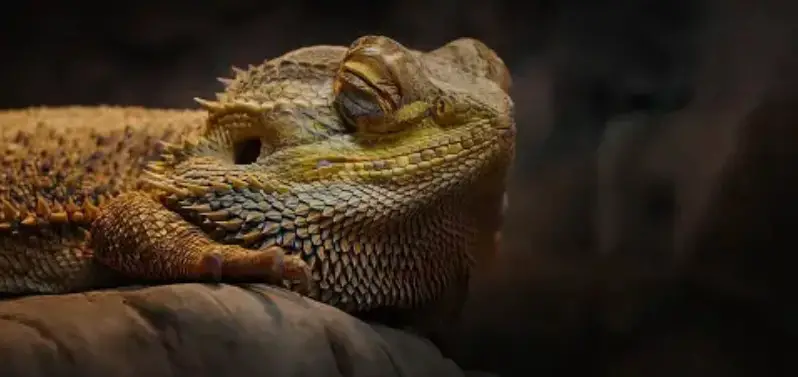
Bearded dragons have their unique way of communicating with each other and with their human caretakers.
They use a combination of body language, gestures, and even color changes to express their feelings and intentions.
For instance, when a bearded dragon feels threatened or agitated, it may flatten its body, puff out its beard, and open its mouth wide to display its teeth.
This is a clear warning to potential predators or rivals to back off.
On the other hand, when a bearded dragon is content and relaxed, it may display vibrant colors, such as bright oranges and yellows, to indicate its mood.
12. Bearded dragons can live for 10 to 15 years
Bearded dragons are relatively long-lived reptiles, with an average lifespan of 10 to 15 years.
However, with proper care and a healthy environment, some individuals have been known to live even longer.
Providing a suitable habitat, a balanced diet, regular veterinary care, and plenty of mental and physical stimulation can greatly contribute to their overall well-being and longevity.
It’s important to note that various factors, including genetics, diet, habitat conditions, and overall health can influence the lifespan of a bearded dragon.
13. Bearded dragons shed their skin as they grow
Just like snakes, bearded dragons shed their skin as they grow.
This process, known as ecdysis, allows them to get rid of their old skin and make way for new, healthier skin.
It’s important to note that shedding is a completely normal and natural process for bearded dragons.
During this time, you might notice them rubbing against objects or appearing slightly dull in color.
It’s important to provide them with a proper habitat that includes a humid hide or a moistened area to help facilitate the shedding process.
Learn more about bearded dragon like and dislike.
14. Bearded dragons can detach their tails as a defense mechanism
When faced with a potential threat or predator, bearded dragons have a unique defense mechanism – they can detach their tails!
This incredible ability, known as caudal autotomy, allows them to sacrifice their tails to distract the attacker and make a quick getaway.
The detached tail will continue to wiggle, distracting the predator and giving the bearded dragon a chance to escape.
Don’t worry though, these resourceful lizards are capable of regenerating their tails, although the new tail may not be as long or vibrant as the original.
15. Bearded dragons are capable of making various sounds
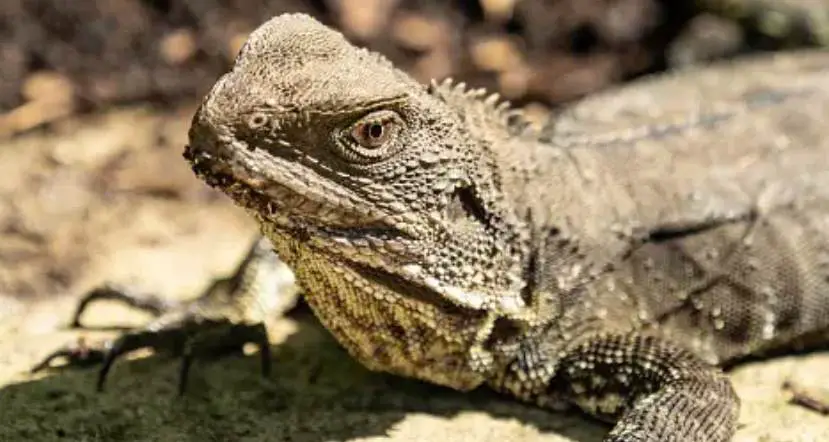
Despite their name, bearded dragons are not known for their vocal abilities.
However, they are capable of making a variety of sounds to communicate and express themselves.
One of the most common sounds they make is a gentle hissing, which is often a sign of stress or discomfort.
They may also make a soft chirping sound when they are content or excited.
Additionally, male bearded dragons can sometimes emit a throaty, vibrating sound called a “beard puff” to display dominance or courtship behavior.
It’s truly fascinating how these reptiles can communicate without using words!
16. Bearded dragons come in a variety of colors and patterns
One of the most captivating aspects of bearded dragons is their incredible diversity in colors and patterns.
These lizards can be found in a range of vibrant hues, including shades of orange, red, yellow, and even blue.
Some bearded dragons have striking patterns, such as stripes, spots, or even a combination of both.
These unique colorations and markings not only make each individual bearded dragon distinct but also serve as a form of camouflage in their natural habitats.
So, if you’re looking to add a colorful and visually stunning reptile to your life, a bearded dragon might be the perfect choice!
17. Bearded Dragons Can Regrow Their Teeth
Bearded dragons have a unique ability to regrow their teeth if they happen to lose them. This regrowth process is known as polyphyodonty.
Unlike humans, who only get two sets of teeth (baby teeth and permanent teeth), bearded dragons continuously replace their teeth throughout their lives.
This allows them to maintain their ability to eat and chew properly.
So, if a bearded dragon loses a tooth while munching on its favorite meal, no worries!
A new tooth will grow in its place, ensuring they can continue enjoying their food.
18. Females Bearded Dragons Can Store Sperm for Later
Female bearded dragons have an incredible reproductive strategy. They can store sperm from a male for an extended period of time.
This means that even if a female hasn’t mated recently, she can still fertilize her eggs with stored sperm.
This ability allows female bearded dragons to reproduce without the immediate presence of a male. It’s like having a backup plan for reproduction!
This unique adaptation ensures the survival of their species, even in situations where males may not be readily available.
Learn more about the myth about bearded dragons.
19. Bearded Dragons brumate in the winter
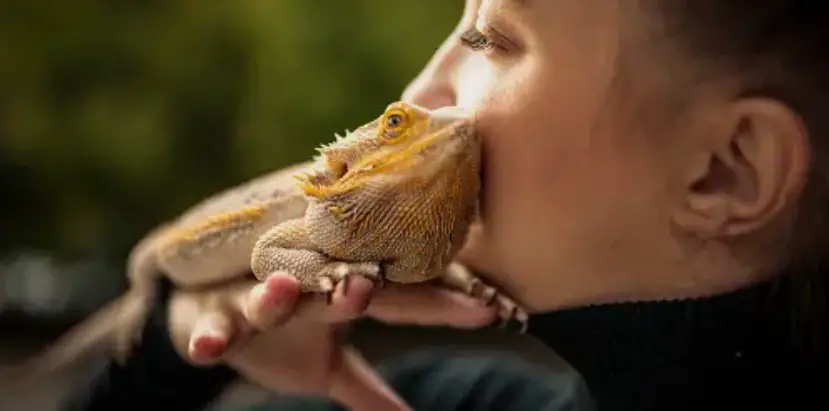
While we humans bundle up and enjoy cozy winter activities, bearded dragons have their own way of dealing with the cold.
They enter a state called brumation, which is similar to hibernation in mammals.
During brumation, bearded dragons slow down their metabolism, become less active, and may even sleep for extended periods.
This behavior helps them conserve energy and adapt to the colder temperatures.
It’s like their way of taking a long winter nap until the warmer days return.
So, while we’re sipping hot cocoa, bearded dragons are snuggled up, conserving their energy for the spring.
20. Bearded Dragons Can Change Color
Bearded dragons are known for their vibrant and beautiful colors.
They have specialized skin cells called chromatophores that allow them to adjust their skin tone.
These cells contain pigments that can expand or contract, resulting in changes in color.
Bearded dragons can darken or lighten their skin to regulate their body temperature, communicate with other dragons, or even express their mood.
It’s like having a built-in mood ring! So, if you see a bearded dragon changing colors, it’s not just for show; it’s their way of expressing themselves and adapting to their environment.
Learn more about bearded dragon health concerns.
Conclusion
So, there you have it! Bearded dragons truly are fascinating creatures that make wonderful pets. Whether it’s their unique appearance, their gentle temperament, or their quirky behaviors, there’s no denying the charm of these scaly companions. So why wait? Dive into the world of bearded dragons and experience the joy they bring firsthand!
